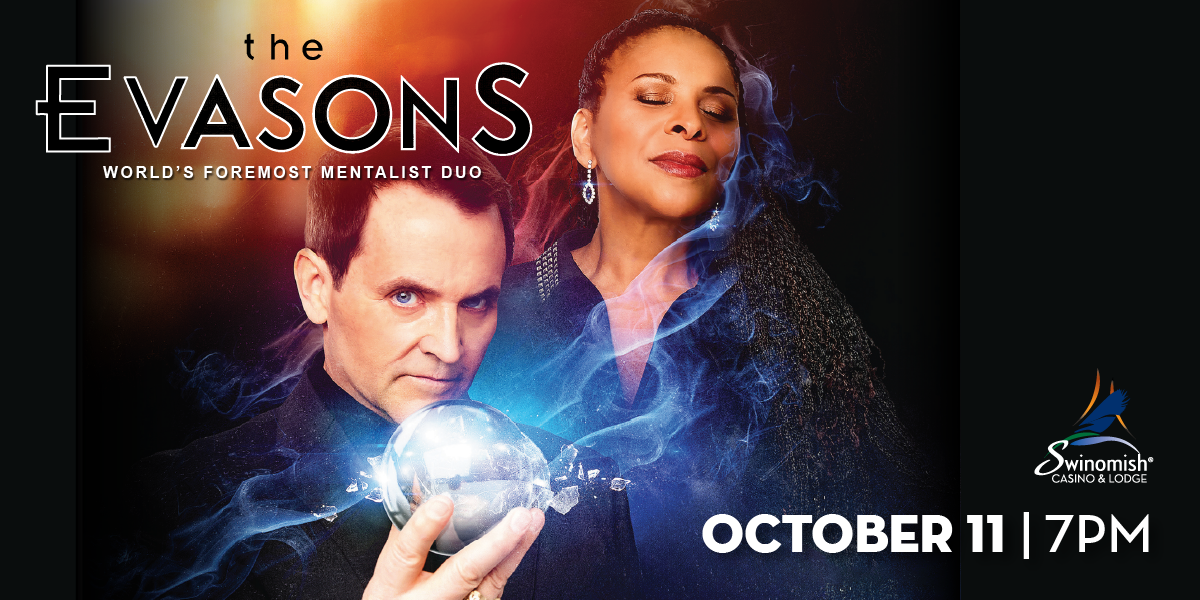This year, book your Island Adventures Whale Watching Package at Swinomish Casino & Lodge to witness the breathtaking Pacific Northwest waters and its native marine animals. To help prepare you for your guided whale tour, here are some fast facts about the different marine mammals you might see swimming at sea!
Gray Whales
- INTERESTING FACT: when a gray whale surfaces, it exhales seawater, oil and mucus up to 15 feet high, making it easy to spot them on the horizon.
- TEETH: they don’t have teeth but have baleen plates in their mouth. The baleen plates filter out food from the sea water. Baleen is made of keratin — same material as fingernails!
- SIZE: they can grow up to 50 feet long.
- SOUNDS: they aren’t known for making a large variety of sounds, but they make simple vocalizations such as grunts, knocks and pulses. They’re most vocal during breeding and at feeding sites.
- PHYSICAL CHARACTERISTICS: they usually have whale lice and parasitic barnacles stuck to their bodies. They don’t have a dorsal fin (on their back) but have a series of dorsal ridges.
Humpback Whales
- INTERESTING FACT: humpbacks frequently breach, leaping clear out of the water, or raise their flukes when diving. The white markings on each humpback tail are unique.
- TEETH: humpbacks don’t have teeth. They have a series of 270 to 400 baleen plates to help them sift food out from seawater.
- SIZE: they can grow up to 45 feet long, with females being slightly larger than males.SOUNDS: humpbacks sing a variety of songs, including sighs, snorts, shines, trills and whines. Sometimes they sing for a few minutes, sometimes for a few days.
- SOUNDS: humpbacks sing a variety of songs, including sighs, snorts, shines, trills and whines. Sometimes they sing for a few minutes, sometimes for a few days.
- PHYSICAL CHARACTERISTICS: humpback whale flippers are one-third their body length, making them the longest flippers of any cetacean (marine mammal, including whales).
Orcas (Killer Whales)
- INTERESTING FACT: orcas aren’t actually whales — they are in the dolphin family.
- TEETH: they have between 40 to 56 interlocking teeth, each about 3 inches long and conical shaped. They are built to rip and tear, but not chew.
- SIZE: they can grow up to 32 feet long, with males being slightly larger than females.
- SOUNDS: each pod has its own distinct dialect of sounds that they use to communicate with each other from several miles away.
- PHYSICAL CHARACTERISTICS: their bodies are black and white. They have a tall dorsal fin (on their back).
*In recent news, SeaWorld announced that it will stop breeding its orcas and phase them out of its marine animal parks. SeaWorld will keep its current orcas for now, including 48-year-old Lolita (captured from Puget Sound) Eventually, SeaWorld shared that it will focus on creating “natural orca encounters.” For more information on the story, CLICK HERE.
Island Adventure Schedule
Best time to see gray whales: now through May 8
Best time to see humpback whales and orcas: April 2 through November 26
For more information on whale tours, CLICK HERE.
To book your Island Adventures Whale Watching Package at the Swinomish Casino & Lodge, CLICK HERE.
Resources:
NOAA: Killer Whale Anatomy
National Park Service: Orcas
Washington State Department of Ecology: Humpback Whales
NOAA: Humpback Whale Trivia
Washington State Department of Ecology: Gray Whale
NOAA: The Kids’ Time, Gray Whale
NOAA: Gray Whales









